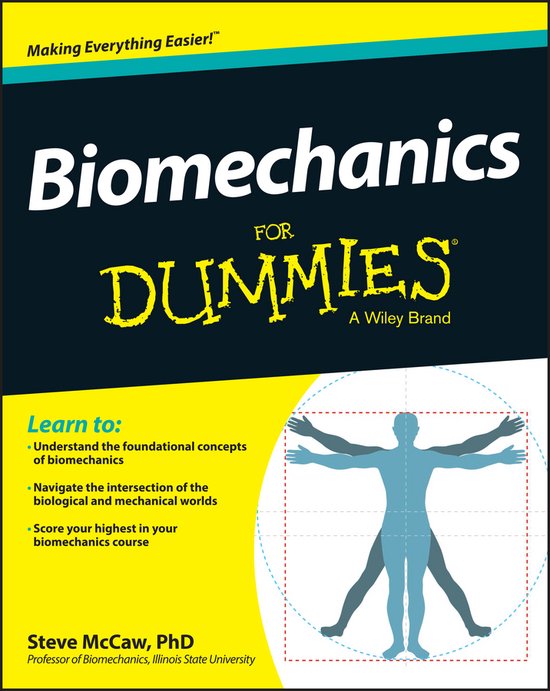Biomechanics for dummies

Uiterlijk 6 december in huis
A thorough explanation of the tenets of biomechanics At once a basic and applied science, biomechanics focuses on the mechanical cause-effect relationships that determine the motions of living organisms. Biomechanics for Dummies examines the relationship between biological and mechanical worlds.
Learn to:
Understand the foundational concepts of biomechanics Navigate the intersection of the biological and mechanical worlds Score your highest in your biomechanics courseJump into biomechanics with this definitive, user-friendly guide
Jump right into biomechanics, where the biological and mechanical worlds meet! Biomechanics is a fundamental concept that applies to a diverse range of fields, from biological sciences and sports medicine to ergonomics and engineering. If you want to ace your biomechanics class, this easy-to-use, jargon-free guide is the perfect resource!
Jump into biomechanics discover what biomechanics and kinesiology are and how they related to athletic training, sports medicine, and coaching Twisting and turning understand torques and moments of force, as well as what these concepts mean for the way the body moves Touching a nerve find out what nerves do and how they sense inputs and interact with other systems to produce motor outputs Measuring performance dive into the fun part of biomechanics with an overview of measuring the physical performance of the body Ace your class get insights about biomechanics that will help you prepare for your course on the subject and ace your examsOpen the book and find:
An introduction to using biomechanics to analyze movement A full overview and intro to kinematics The terminology and foundational concepts of biomechanics A guide to motion analysis and control Medical illustrations to drive home lessons Information on motion capturing systems Tips to get the most out of your biomechanics courseA thorough explanation of the tenets of biomechanics
At once a basic and applied science, biomechanics focuses on the mechanical cause-effect relationships that determine the motions of living organisms. Biomechanics for Dummies examines the relationship between biological and mechanical worlds. It clarifies a vital topic for students of biomechanics who work in a variety of fields, including biological sciences, exercise and sports science, health sciences, ergonomics and human factors, and engineering and applied science. Following the path of a traditional introductory course, Biomechanics for Dummies covers the terminology and fundamentals of biomechanics, bone, joint, and muscle composition and function, motion analysis and control, kinematics and kinetics, fluid mechanics, stress and strain, applications of biomechanics, and black and white medical illustrations.
Offers insights and expertise in biomechanics to provide an easy-to-follow, jargon-free guide to the subject Provides students who major in kinesiology, neuroscience, biomedical engineering, mechanical engineering, occupational therapy, physical therapy, physical education, nutritional science, and many other subjects with a basic knowledge of biomechanicsStudents and self-motivated learners interested in biological, applied, exercise, sports, and health sciences should not be without this accessible guide to the fundamentals.
- 1 Bekijk alle specificaties



Taal: en
Bindwijze: Paperback
Oorspronkelijke releasedatum: 30 mei 2014
Aantal pagina's: 408
Illustraties: Nee
Hoofdauteur: Steve Mccaw
Hoofduitgeverij: For Dummies
Extra groot lettertype: Nee
Product breedte: 150 mm
Product hoogte: 22 mm
Product lengte: 210 mm
Studieboek: Ja
Verpakking breedte: 186 mm
Verpakking hoogte: 23 mm
Verpakking lengte: 235 mm
Verpakkingsgewicht: 837 g
EAN: 9781118674697